Botswana! What a magnificent country! During our 3-week self-drive tour in November 2025, we discovered numerous sights and highlights in Botswana. We already know that we want to travel to this country again in the near future because it simply captivated us.
We explored a wide variety of landscapes, saw numerous wild animals, experienced wonderful moments with other travelers, and enjoyed every day in nature to the fullest. This trip was certainly our greatest African adventure on the African continent to date, and we are already looking forward to many more.
Are you currently planning a trip to Botswana and are still looking for a little inspiration? Then our new post is sure to come in handy. In the following article, we would like to introduce you to our most beautiful Botswana sights and give you some helpful tips.
What else you should know
- What else you should know
- Overview of Botswana attractions
- 1. The Khama Rhino Sanctuary
- 2. Makgadikgadi Pans National Park
- 3. The magnificent Nxai Pan National Park
- 4. The Baines Baobab (monkey bread trees)
- 5. Visit the meerkat colony
- 6. Absolute silence in the Nwetwe Pan
- 7. Moremi Game Reserve (Okavango Delta)
- 8. Boat tour through the Okavango Delta
- 9. Game drive in Chobe National Park
- 10. Elephant Sands Lodge
- 11. Kgalagadi Transfrontier Park
- During the rainy season in Botswana
- Sights in Botswana – Our conclusion
Overview of the sights in Botswana
Botswana is home to around 2.6 million inhabitants in an area of 581,730 km². By comparison: Germany has 83 million inhabitants in an area of approximately 357,588 km². As you can see, Botswana is a very, very sparsely populated country, which makes traveling there all the more pleasant. Botswana impresses with its contrasting and untouched natural landscapes as well as its diverse flora and fauna.
Over 80% of the country is covered by the dry Kalahari with the salt pans to the north, the Okavango Delta in the northwest, and various mopane and miombo forests in the north. On the map below, we have marked all the country’s most important spots and highlights. If we’ve missed an important spot, please let us know in the comments.
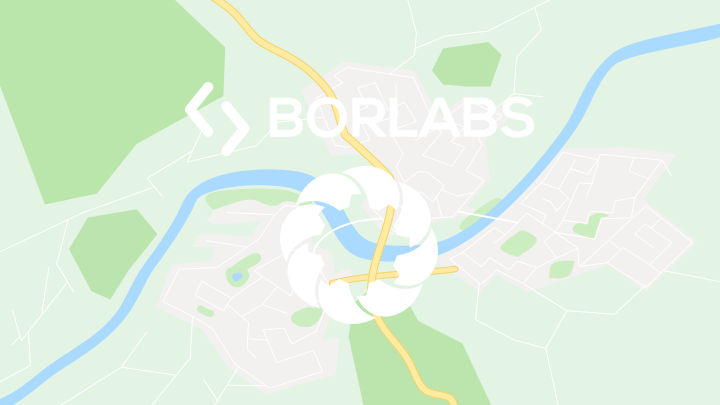
By loading the map, you accept Google’s privacy policy.
Learn more
Load map
1. The Khama Rhino Sanctuary
After crossing the border (Martin’s Drift – South Africa) and spending the first night there at the KwaNokeng Lodge campsite, we were able to continue on to the Khama Rhino Sanctuary the next morning. This nature reserve, established in 1992, covers approximately 43 km² and is located about 25 km from the town of Serowe. This community project is dedicated to protecting the endangered white and black rhinos and enabling them to live a safe life in freedom.
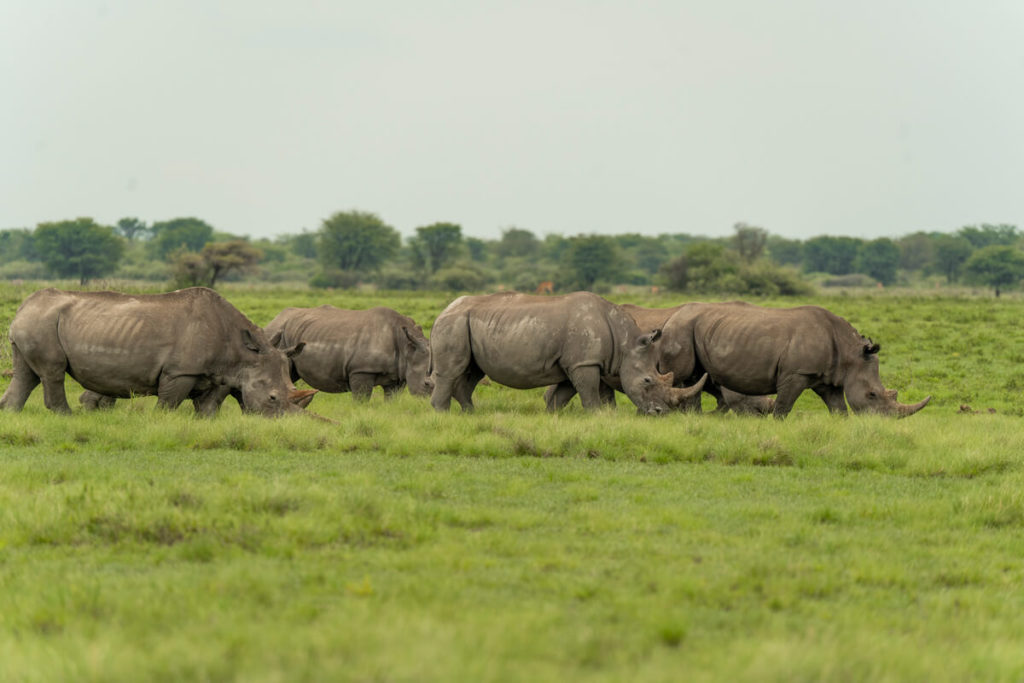
Unfortunately, these wonderful animals are still hunted and killed by poachers in order to sell their “valuable” horn abroad for a lot of money. You should know that rhino horn is one of the “most expensive illegal wildlife products” in the world. And this is precisely why so many rhinos are killed every year. This makes nature reserves like the Khama Rhino Sanctuary in Botswana all the more valuable.

The Anti-Poaching Unit
During a game drive in the park, we spotted many animals, such as giraffes, ostriches, zebras, wildebeest, antelopes, various bird species, and, of course, larger groups of rhinos. These are guarded day and night by an armed army anti-poaching unit. There are also electric fences surrounding the entire area, as well as watchtowers. Approximately 30 white rhinos and 4 black rhinos live in the reserve.
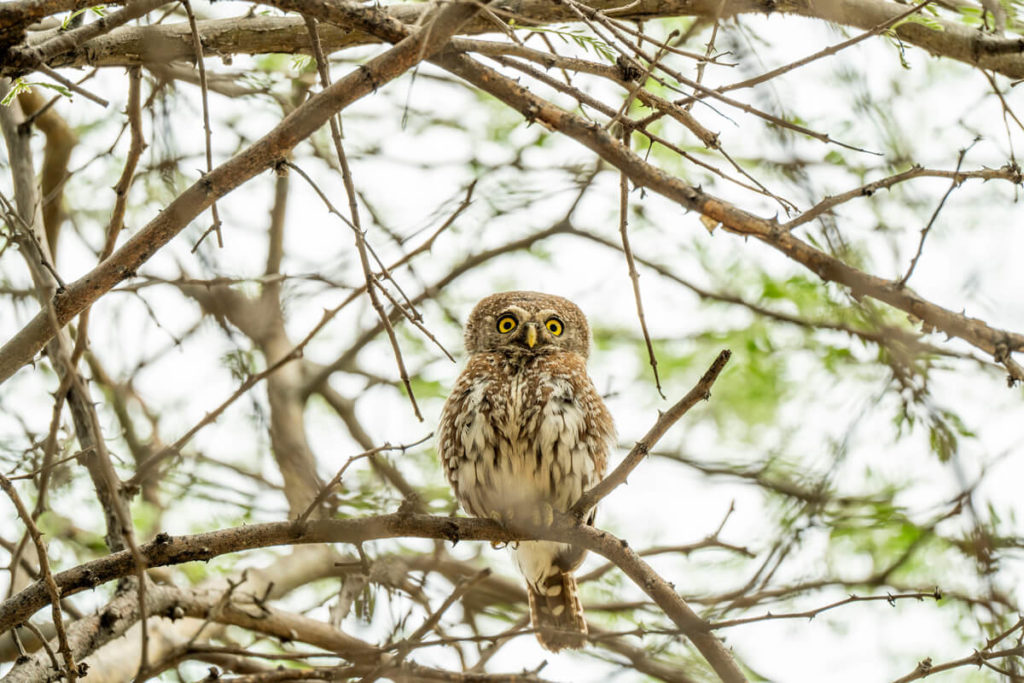
After our game drive through the park, we moved into Campsite No. 6 of the Khama Rhino Rest Camp. These campsites are located in the south of the park and awaited us with a fire pit, barbecue grill, water tap, and a large, shady Mokongwa tree. Communal toilet facilities are also located not far from each campsite. There, we pitched the roof tent and relaxed to the end of our wonderful day.
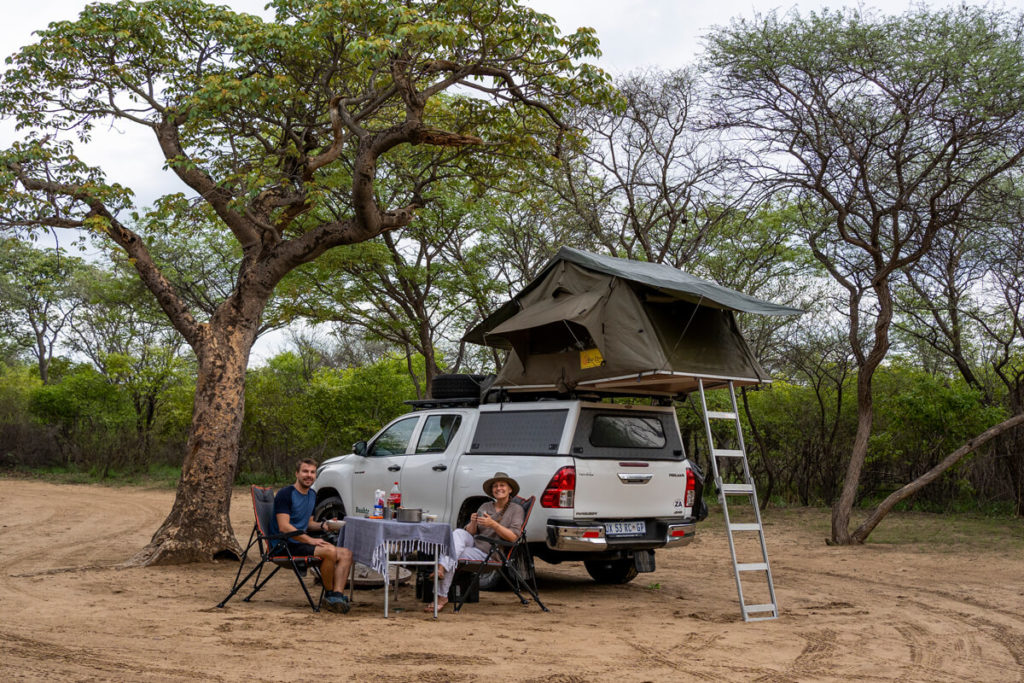
Information about the Khama Rhino Sanctuary
- Opening hours: daily from 7 a.m. to 7 p.m.
- Park prices: Adults 96.85 Pula and children 48.45 Pula + car fees 119.20 Pula
- Camping prices: Adults 106.70 Pula and children 53.35 Pula
- Facilities: Chalets, restaurant & bar, shop, picnic area, dorms, 22 campsites
- Booking: best in advance by email or on-site outside of the season
- More information here: Khama Rhino Sanctuary website
2. Makgadikgadi Pans National Park
In our opinion, one of Botswana’s top attractions is definitely the Makgadikgadi Pans National Park, which is located south of the Nxai Pan National Park. While it forms a single entity with the Nxai Pan National Park, we will examine both separately in this article. Our accommodation in this area was the Boteti River Camp in the small village of Kuhmaga. From there, it was only a stone’s throw to the Khumaga Gate of the national park. To our campsites.
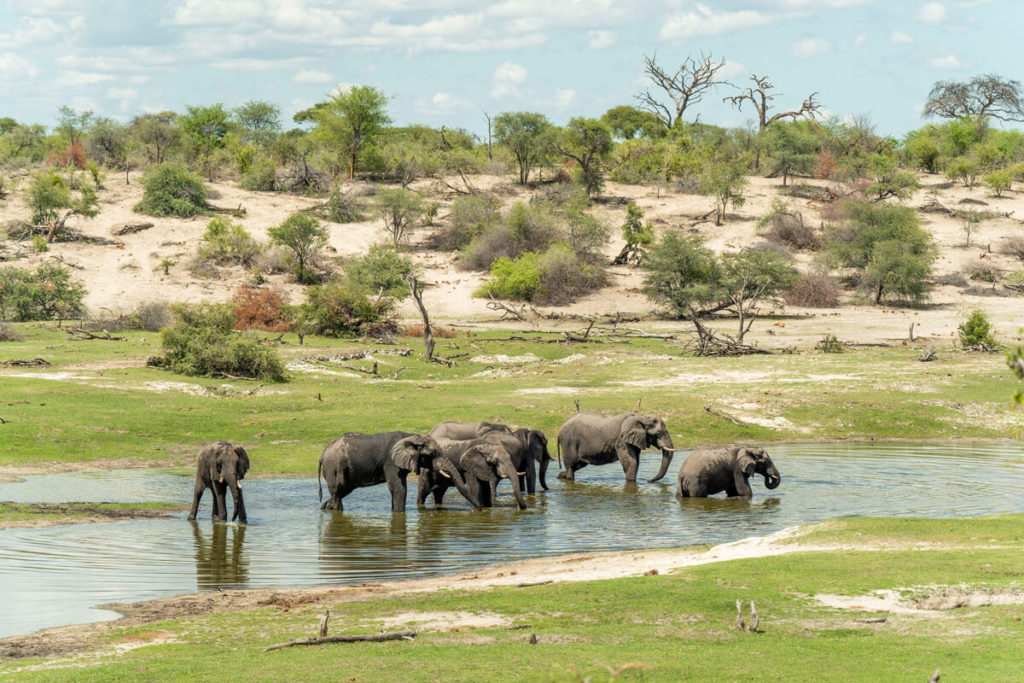
The Makgadikgadi Pans National Park is part of a over 16,000 square kilometer salt pan system, which includes a variety of salt pans. These include the Ntwetwe Pan, the Sowa Pan, and the Kudiakam Pan. On our way through the park, we saw elephants, antelopes, hippos, numerous bone remains, vultures, yellow-billed hornbills, and plenty of Cape glossy starlings. We were also able to drive very well through the sometimes soft and deep sand in our Toyota Hilux 4×4.
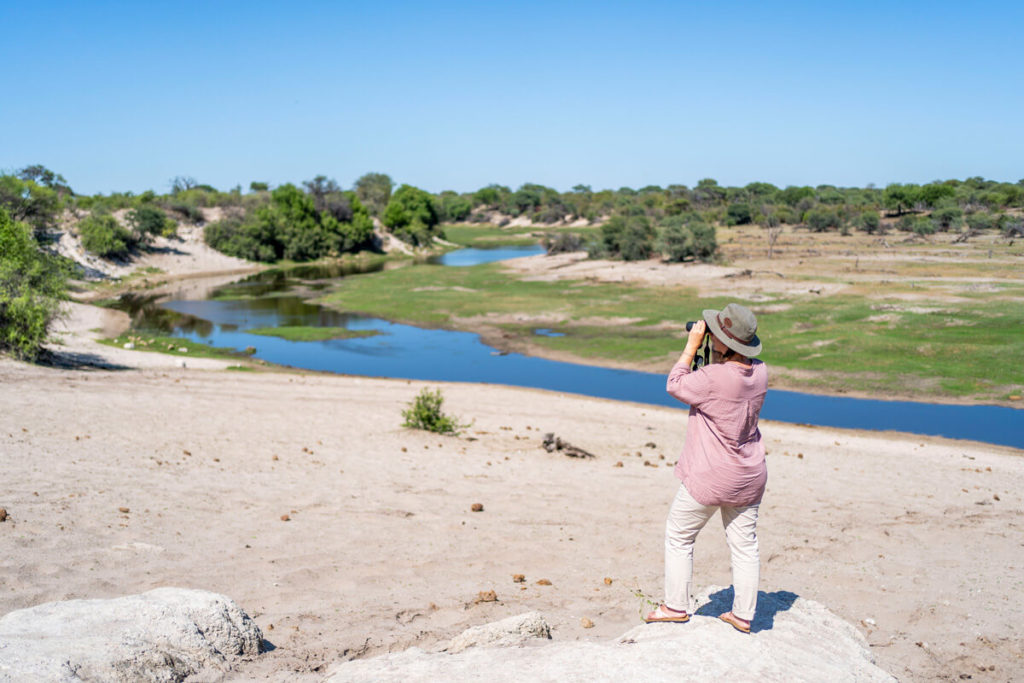
The Great Migration
From the Khumaga Gate, we drove along the Boteti River before turning towards the Phuduhudu Gate. Along the way, we passed several truly beautiful viewpoints. Here we were able to park the car, get out, and enjoy the view. It must be really great between May and November, when the plains are dry and around 20,000 zebras, 8,000 wildebeest, and hundreds of elephants gather in this region to search for water along the Boteti River.
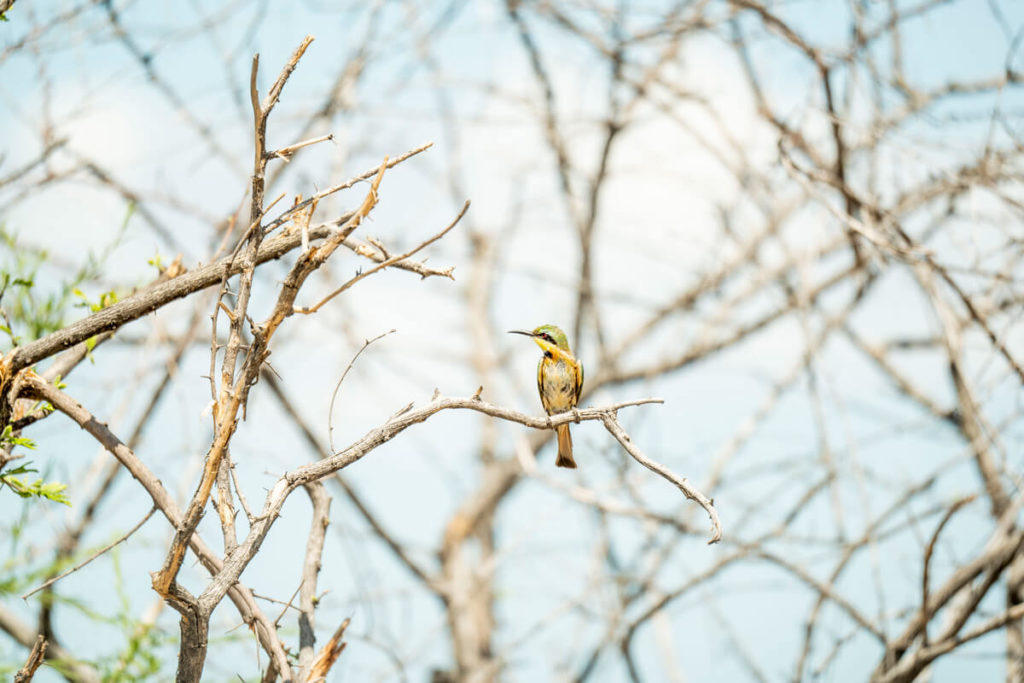
Information about the Makgadikgadi Nxai Pans National Park
- Opening hours April to September: 6 a.m. to 6:30 p.m.
- Opening hours October to March: 5:30 a.m. to 7 p.m.
- Park prices: Adults 190 Pula + car 75 Pula (children 95 Pula)
- Accommodations & Campsites: Camp Kalahari, San Camp, Jacks Camp, Khumaga Campsite, Leroo La Tau, Boteti River Camp
- We generally wouldn’t travel through Botswana without a 4×4
- It’s best to fill up with gas in Rakops, Maun, Gweta, or Nata
3. The magnificent Nxai Pan National Park
We left the Makgadikgadi Pans National Park through the Phuduhudu Gate, drove a short distance on the A3, and then turned left to the Makolwane Gate. There we presented our permit and were then able to continue into the Nxai Pan National Park.
This 2578 km² wildlife sanctuary consists of several pans, which are part of a dried-up ancient lake. We drove for almost two hours through the park toward the famous baobab trees, passing hundreds of zebras and wildebeests along the way. We were there at just the right time, as the largest zebra migration outside of Tanzania was taking place.
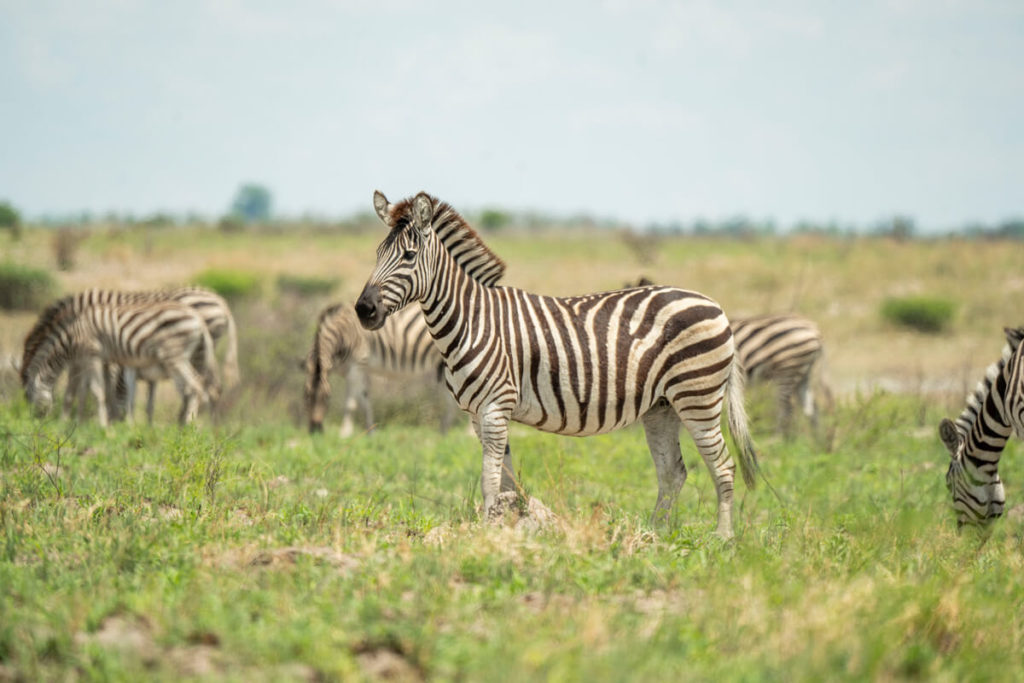
From the New South Gate, we drove 17 km to the first intersection. The unpaved tracks were very easy to navigate with our 4×4. It’s important to let some air out of your tires at the gate so you can drive more easily through the soft sand. We had a small compressor on board, which we used to let the air back in after the tour. But back to the park and the animals. In addition to the many zebras and wildebeests, we also saw elephants, oryx antelopes, bustards, giraffes, and birds moving and flying through the open grasslands.
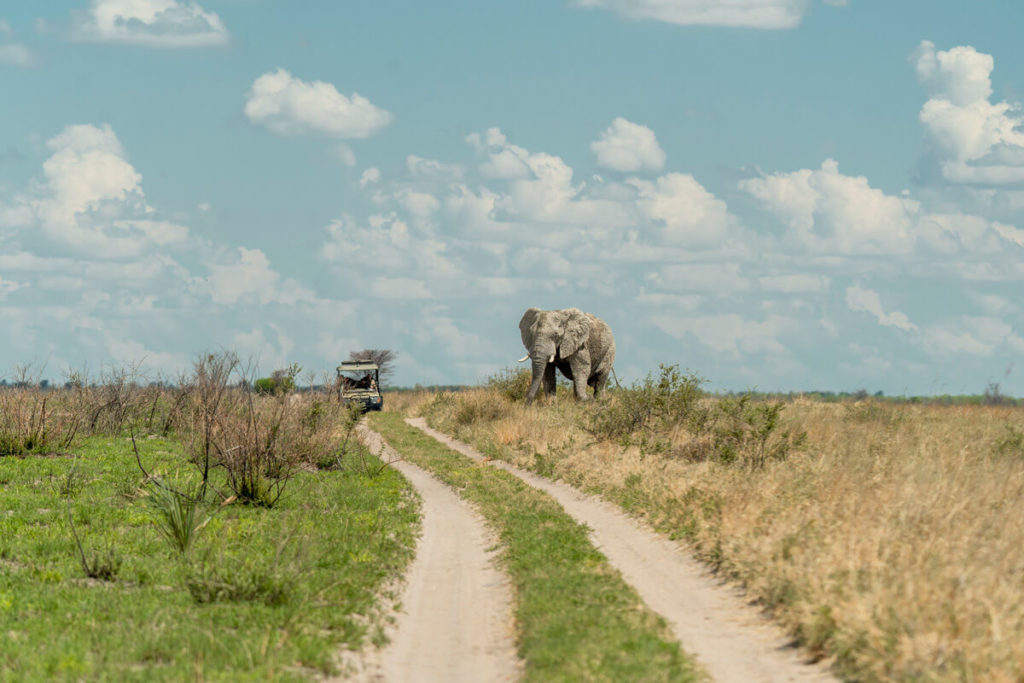
Staying overnight in the Nxai Pan National Park
For many visitors, spending the night in the heart of the Nxai Pan National Park is a major highlight. You have the choice and can stay either at the Baines Baobab Campsite around the Kudiakam Pan (3 pitches in total) or 20 km north at South Camp (10 pitches in total). We could have spontaneously gotten a spot on-site (November 2025), but we already had our accommodation on the Boteti River. During peak travel season, it’s a good idea to book these sites in the national park in advance. The campsites are managed by the Xomae Group.
Important! These sites are not for the faint of heart. There are no fences, so the wild animals can roam freely and may even pass close to your car. You will probably hear many animals at night and may even see them. If this thrill isn’t for you, book a campsite/accommodation outside the park. For us, these were the best adventures in Botswana, but more on that later.
Campsite prices (as of 2024):
- South Camp: €30 per person per night (plus park entrance fee on site)
- Baines Baobab: €39 per person per night (plus park entrance fee on site)
- Reservations: simply send an email to reservations@xomaecamps.co.bw
- Payment: via online payment on their homepage
4. The Baines Baobab (Monkey Baobab Trees)
After admiring the many zebras, wildebeests, and elephants, we drove almost 16 km further towards the famous baobab trees, which were located on the edge of the Kudiakam Pan. Seven gnarled baobab trees stand close together here, captured on canvas by the artist Thomas Baines in 1861 during an expedition through Botswana. These monkey bread trees (also called “Seven Sisters”) were named after him.
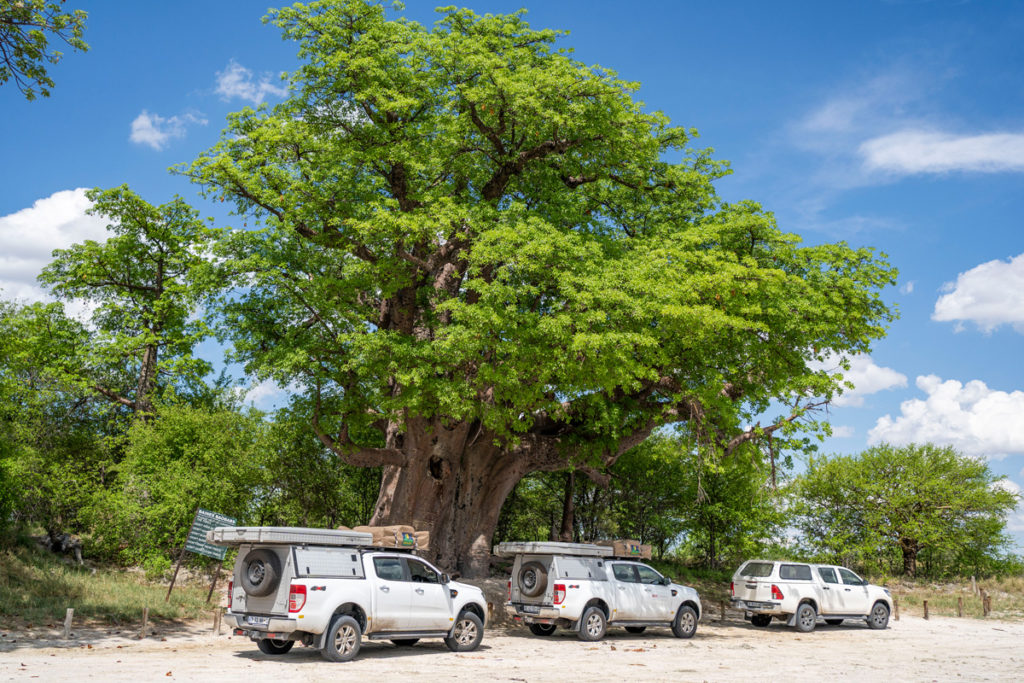
We took a longer break there, chatted with other travelers, exchanged helpful tips, and enjoyed the atmosphere at the huge salt pan beneath the baobabs. Did you know that these trees are a true miracle of nature?
During the rainy season, the tree absorbs up to 140,000 liters of water in its bark to survive the dry period. The fruits, leaves and seeds are still used today to make medicine (which is why the tree is also often called the pharmacy tree), and the bast fibres are used to make household goods and clothing, or even to make fuel and building material.
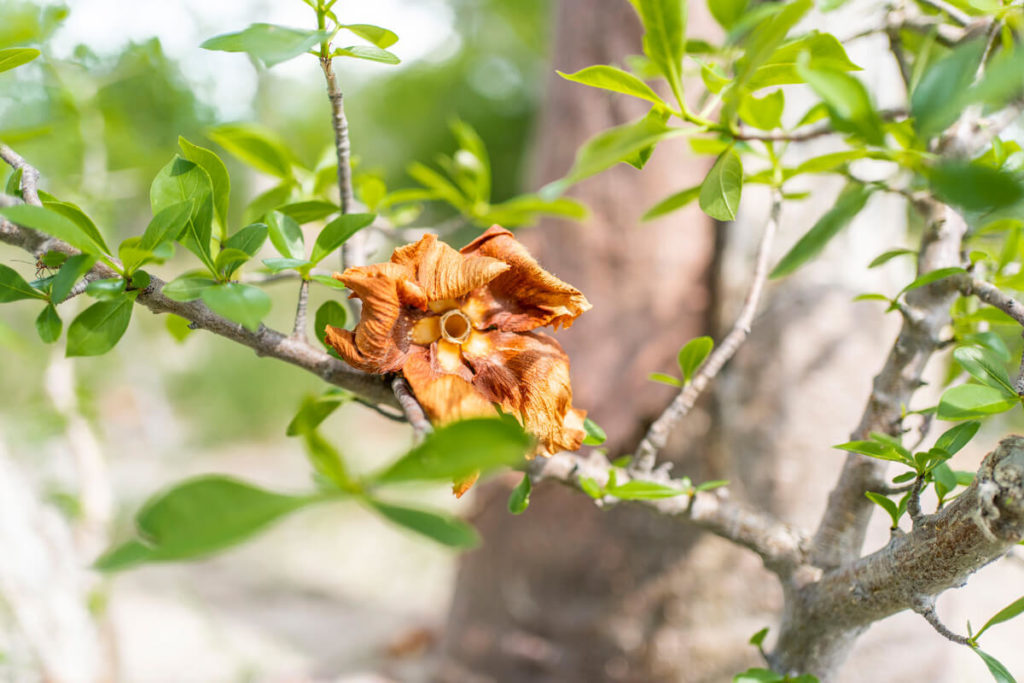
5. Visit a meerkat colony
Another highlight of our Botswana trip was the visit to a small meerkat colony near the huge Nwetwe Pan. We set off early in the morning around 5:30 a.m. from Planet Baobab Camp toward the salt pan. We drove for about 90 minutes in an open jeep through the rather unspectacular pampas to see the small, lively animals at the edge of the salt pan. They usually live in colonies of up to 30 animals and primarily inhabit savannas or semi-deserts in southern Africa. The small colony we visited had perhaps 8 to 12 members.

Meerkats are diurnal animals and are almost always busy finding food, burrowing, and scratching in the ground. They mainly eat insects, but scorpions, lizards, and spiders also occasionally feature on their menu. However, if it rains or is too hot, meerkats prefer to stay in their underground burrows.
We were able to observe the group for quite a while and found it incredibly fascinating to learn more about them. After spending some time at the colony, we had a small breakfast at the jeep with the guides and other guests. We thought the tour was really great and can only recommend it to you.
Book the tour:
- Planet Baobab Camp (approx. €100 per person) ⇨ res@planetbaobab.travel
- Gweta Lodge (approx. €65 – €70 per person) ⇨ gwetalodge@btcmail.co.bw
- Tour also departs from Jacks Camp, Camp Kalahari, and San Camps
- Half-day tour includes: Meerkats + breakfast + Ntwetwe Salt Pan
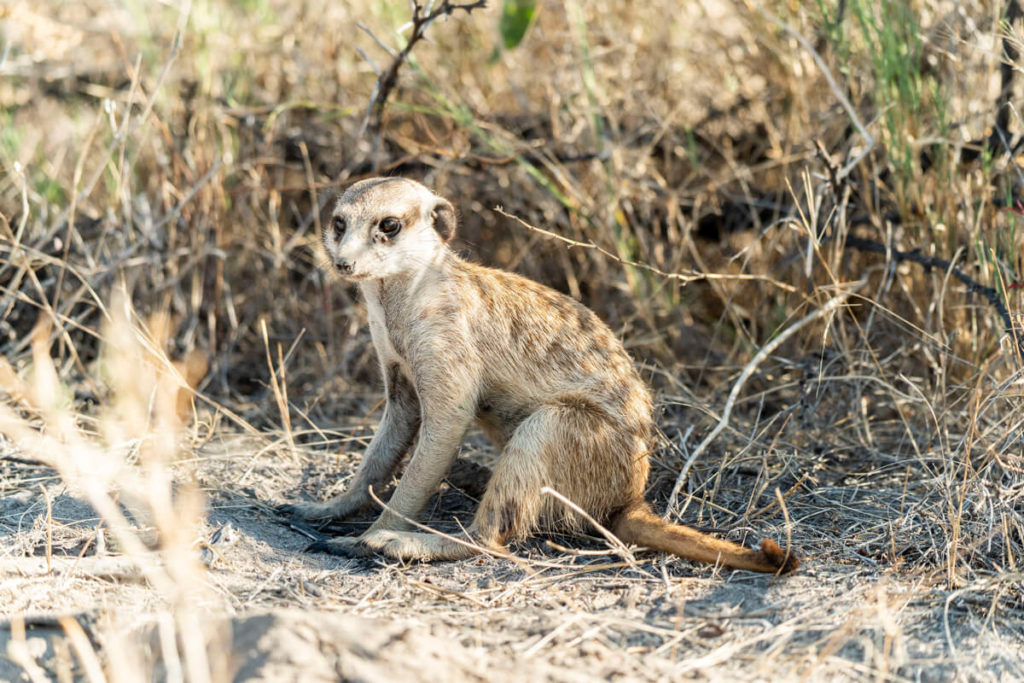
6. Absolute Silence in the Nwetwe Pan
After observing the meerkats for a while and learning more about them, we continued on to the enormous Nwetwe Salt Pan. Our guide told us that between 2 million and 40,000 years ago, most of northern Botswana consisted of a huge lake.
Gradually, this lake and the swampy area dried up, creating the huge pans. Did you know that the Makgadikgadi Pans are considered one of the largest salt pans in the world after the Salar de Uyuni in Bolivia and the Utah Salt Flats? Crazy, right?
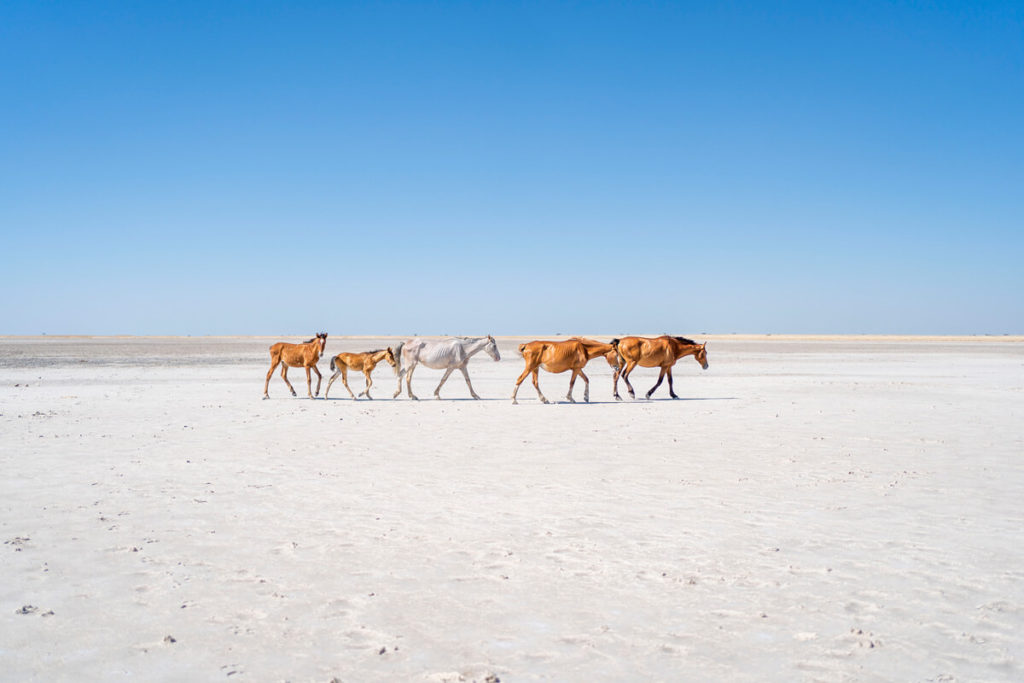
Our guide let us walk a few meters, mainly to enjoy the vastness and the silence. It was an indescribable feeling to stand in the middle of the enormous salt pan and see almost nothing around us. A few wild horses strolled past us later, and in the distance we spotted some zebras in the open grassland.
Generally speaking, the pans themselves are devoid of vegetation. Our guide showed us a video of thousands of flamingos, which he had spotted a few weeks earlier during a helicopter flight over the salt pan.
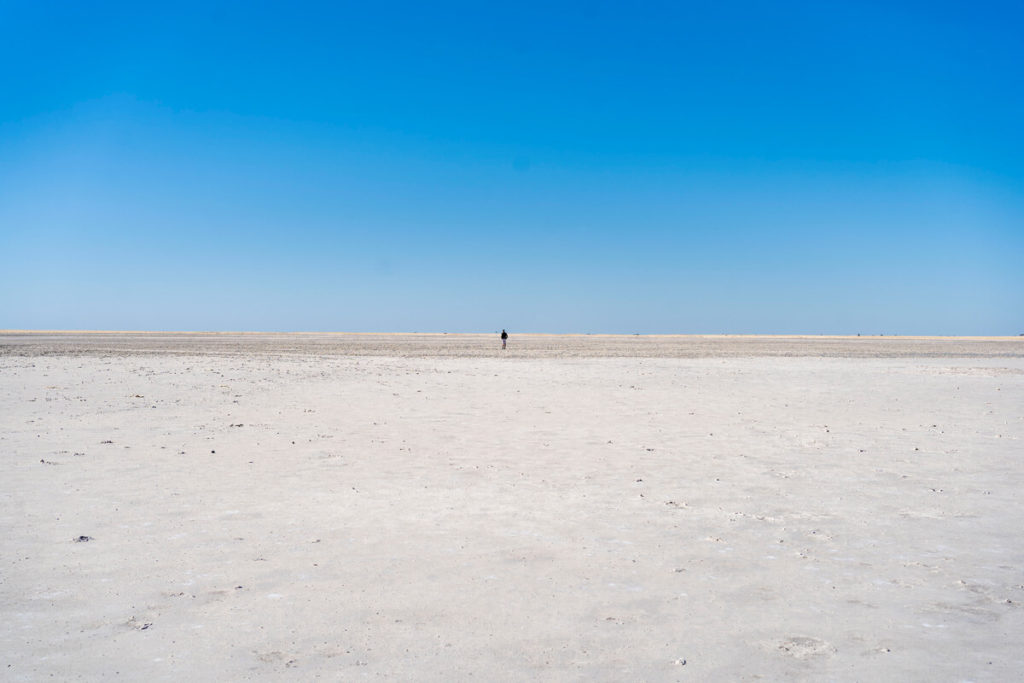
7. Moremi Game Reserve (Okavango Delta)
Finally, our adventurous journey took us to the Okavango Delta. The approximately 1,700-kilometer-long river (originating from Angola) flows into a vast delta in the Kalahari. An area of approximately 6,000 km² is permanently submerged, and just under 5 km² during the flood season from June to August. With an area of over 15,000 square kilometers, the Okavango Delta is the largest and most wildlife-rich inland delta in the world, covering an area the size of Thuringia or Schleswig-Holstein. And that’s exactly where we’ve always wanted to go to see the fascinating flora and fauna with our own eyes. We spent three days in the Moremi Game Reserve (Third Bridge Campsite) and experienced incredibly wonderful and unique moments. The diverse landscapes alone inspired us so much that we’re already planning our next trip there. For us, the reserve is definitely one of the top highlights in Botswana.
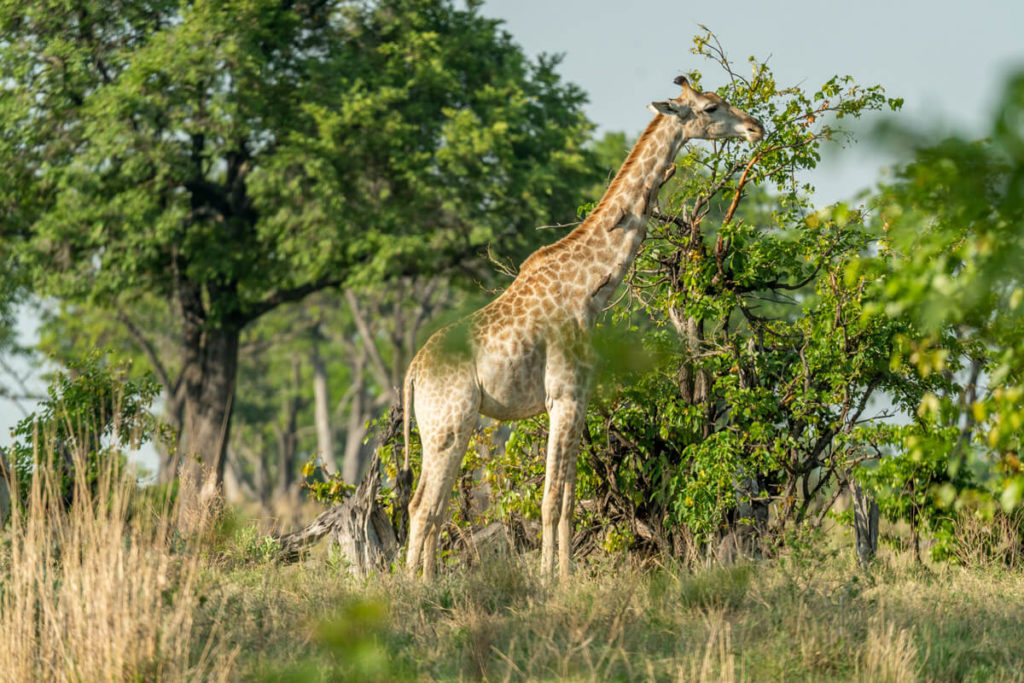
The Moremi Game Reserve is the oldest nature reserve in Botswana and makes up about a third of the total area of the Okavango Delta. In our Toyota Hilux 4×4, it took us just under 5 hours to get from Maun to Third Bridge, where we set up camp for the next 3 days.
We explored the areas around First Bridge, Second Bridge, Third Bridge, and Fourth Bridge, as well as Camp Xakanaxa. Be sure to pick up the park brochure at the gate or online, as all the trails, loops, camps, picnic areas, and paths are clearly marked there. Many trails won’t be found on Google Maps offline.
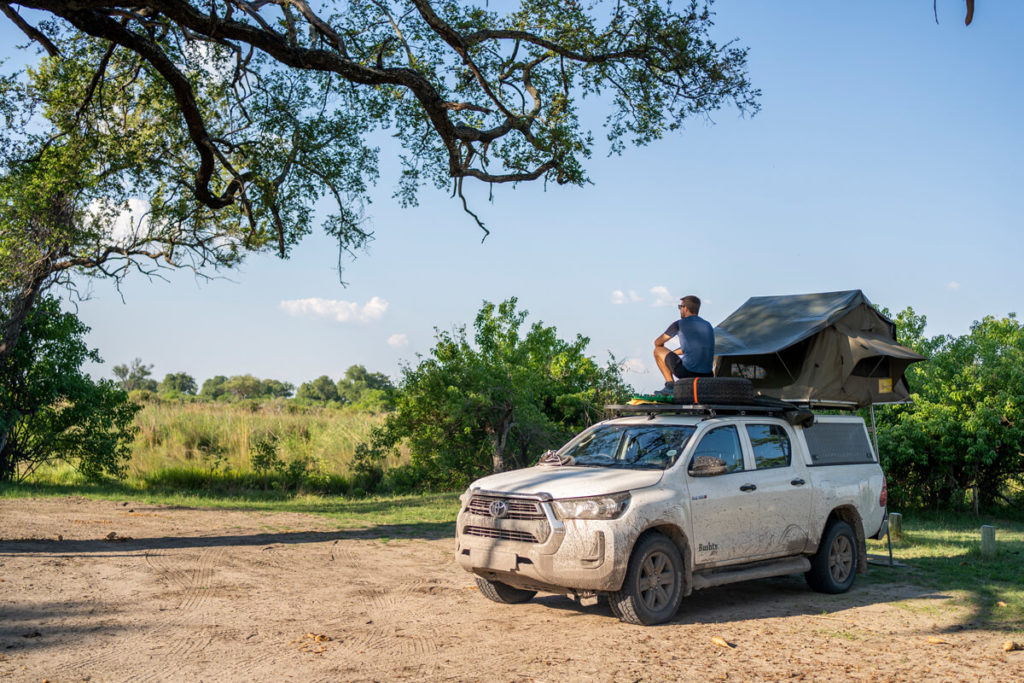
Road conditions in the reserve
Check the road conditions in the reserve in advance (Facebook group here). After heavy rainfall, some trails (including bridges) may be closed or impassable. Flooded rivers, soft sand, deep waterholes, and muddy puddles can also become a huge and sometimes dangerous adventure.
If you have no experience, we recommend traveling in a convoy to your campsite in the reserve. It’s best to join other travelers at the gate. This made us feel much safer and we were able to discuss the route and any potential challenges (e.g., wooden bridges) together.
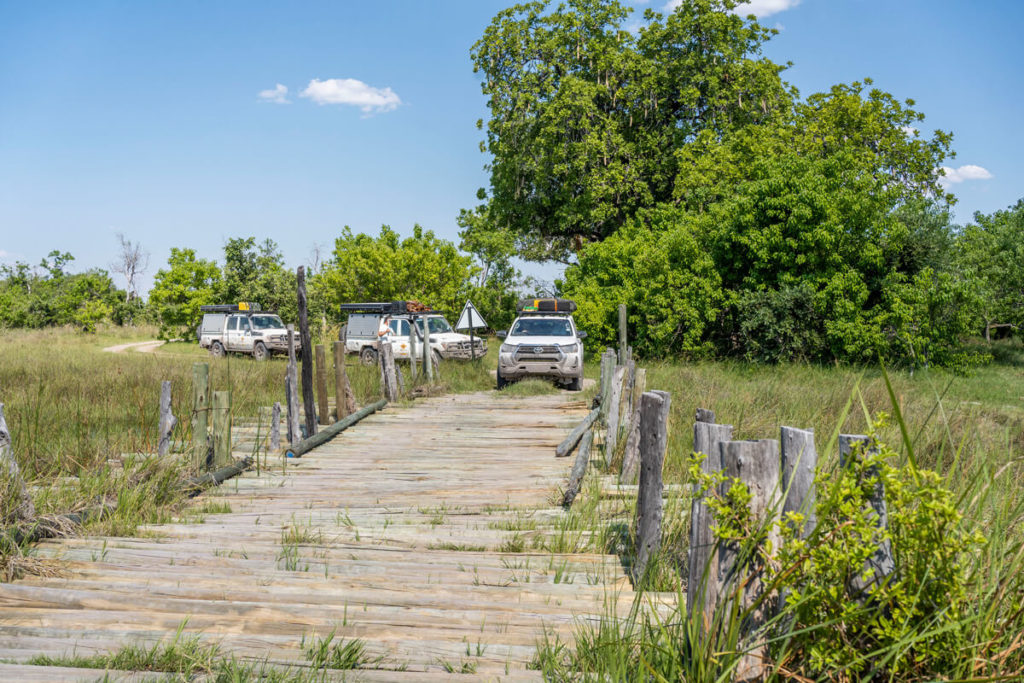
Wildlife in the Moremi Game Reserve
We saw elephants, lions, giraffes, buffalo, wildebeest, zebras, jackals, mongoose, ground squirrels, vervet monkeys, warthogs, antelopes, bat-eared foxes, and hippos. We’ve also never seen such a gigantic variety of birds before. Among those present were the kingfisher, osprey, bee-eaters, hornbills, grey hornbills, storks, herons, hawks, blue herons and jacanas. The rainy season is especially ideal for birdwatching.
Guided tours from Maun:
- From Maun: Tour through the Moremi Game Reserve*
- 3-day Moremi Game Reserve Safari Tour from Maun*
- Day tour through the Okavango Delta in a dugout canoe from Maun*
- Maun: 2-night or 1-night Okavango Delta Camping Trip*
- Day safari into the wilderness deep in the Moremi Game Reserve*
- 5-day Kasane to Maun Safari (Kasane, Chobe, Khwai, Moremi, Maun)*
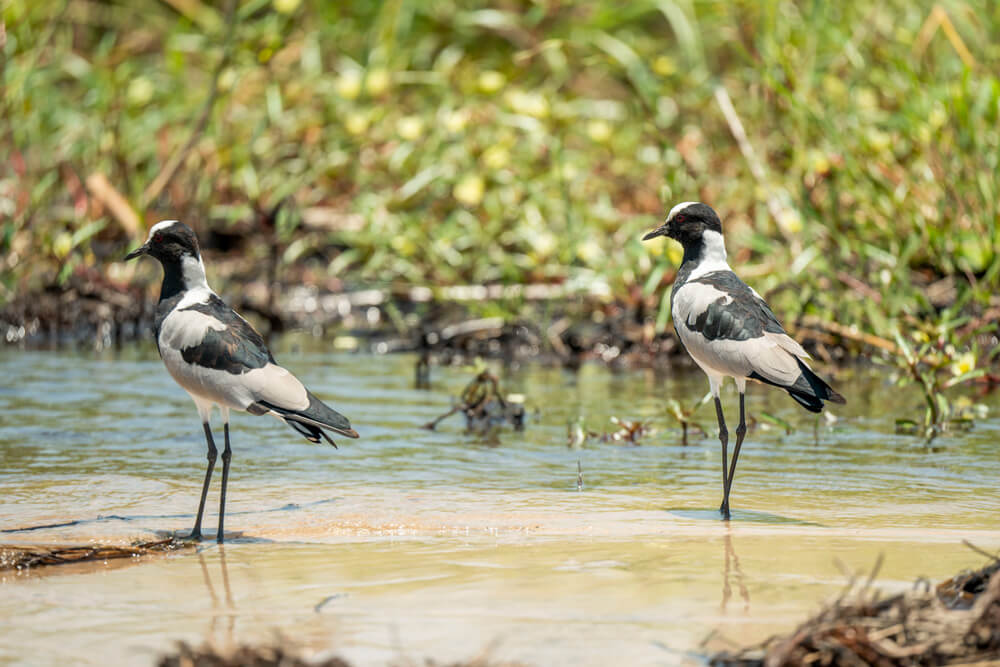
Information about the Moremi Game Reserve
- Opening times April – September: daily from 6 a.m. to 6:30 p.m.
- Opening times October – March: daily from 5:30 a.m. to 7 p.m.
- Entry fees: Adults 270 Pula and children 135 Pula + car fee 75 Pula
- Entry gates: South Gate or North Gate/Kwai
- Car: the tracks are only accessible with a 4×4
- Camping prices: e.g. Third Bridge e.g. 39 € pp and night
8. Boat tour through the Okavango Delta
The Okavango Delta is diverse and full of surprises. Near the Xakanaxa Camp, we spontaneously booked a 2-hour boat tour and explored the narrow arms of the Okavango. We boarded the small boat with another young couple and set off.
It wasn’t long before we saw a huge elephant in the water, happily feeding on the roots of the water lilies. Later, we spotted some hippos in the water right in front of us, as well as more elephants. We also passed a few giraffes standing among the trees in the distance.
Our guide was very nice and told us a lot about the delta and its animals. We simply took in the beauty of this breathtaking natural setting and still couldn’t believe that we were actually in the middle of the unique Okavango Delta.
In such moments, tears often flow, because such an experience is not at all normal for us. And we are already dreaming of the next trip, because we want to travel to Botswana again next year (summer 2024) at the latest.
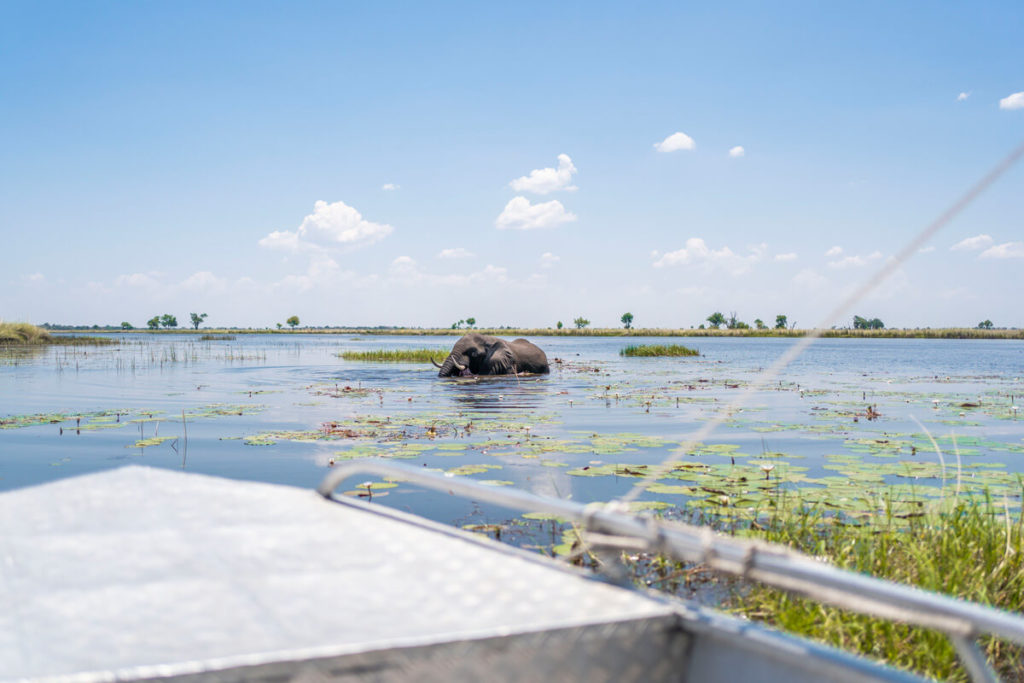
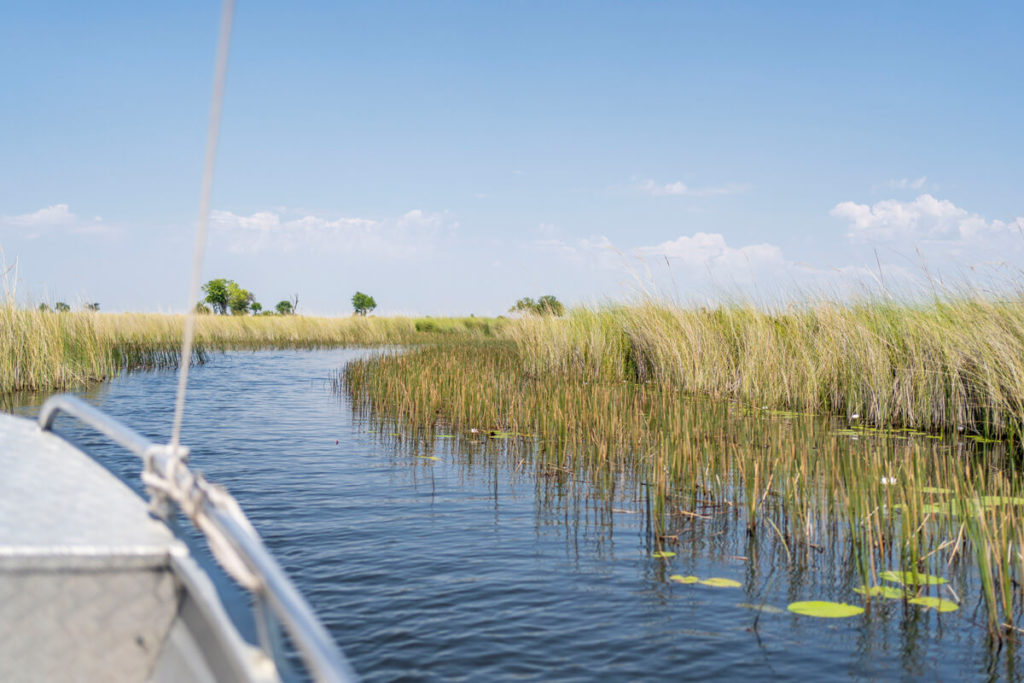
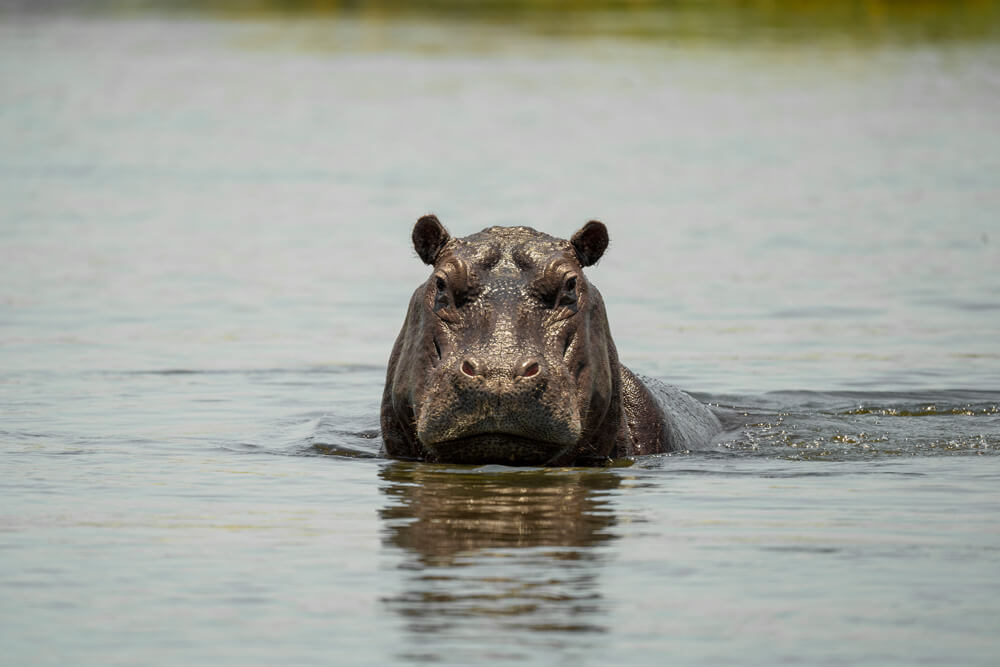

Boat Tour Prices
The more people share a boat, the cheaper it becomes. We paid 912 Pula for one hour. Since there were four of us, we opted for a two-hour tour for a total of 1824 Pula (456 Pula per person). And so in the end we only paid around €65 for both of us, which was a really great deal. You can find the location on Google Maps: Xakanaxa Boat Launch. Our guide said that you can generally book this tour spontaneously on site. We can highly recommend this great Botswana highlight.
Guided tours through the Okavango Delta:
- 1 day Okavango Delta with a traditional mokoro*
- 3-day luxury Okavango safari including meals, accommodation and safari*
- 2 nights Okavango Delta including mokoro, wild camping tour & All-inclusive*
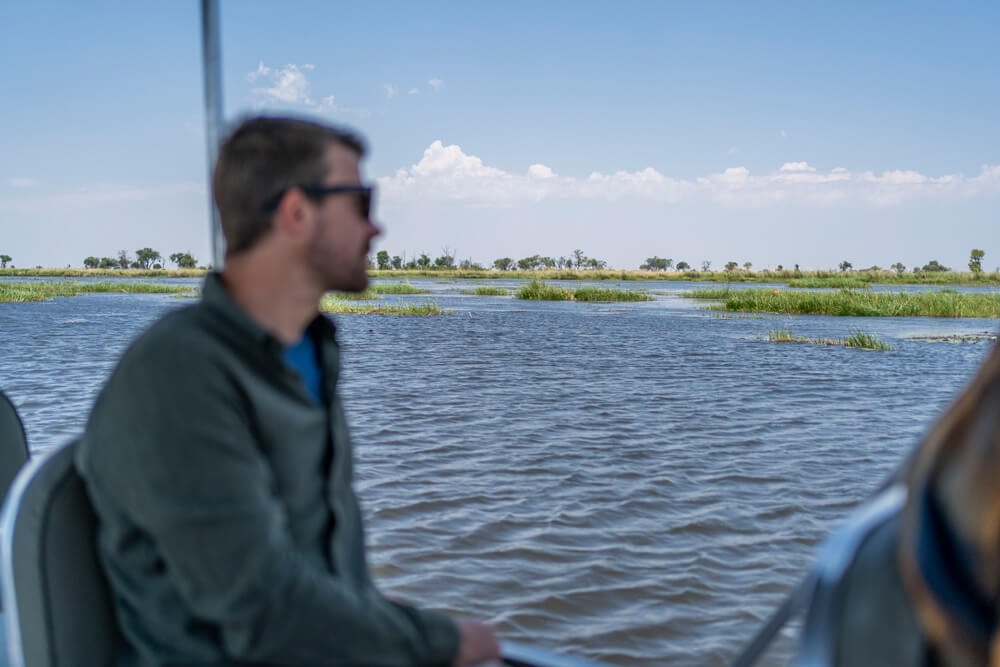
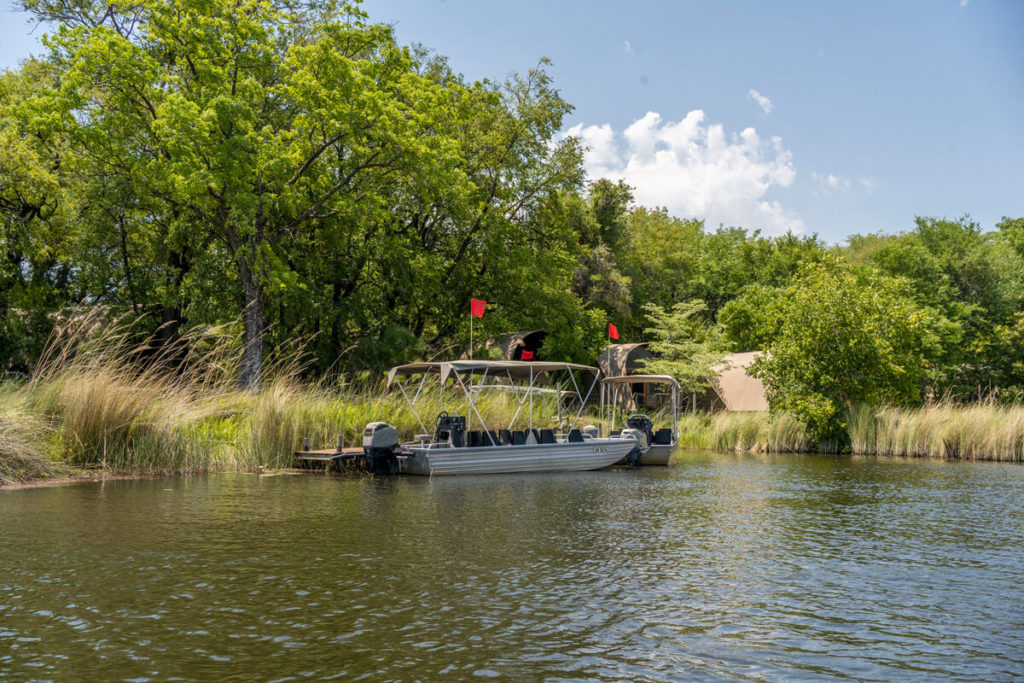
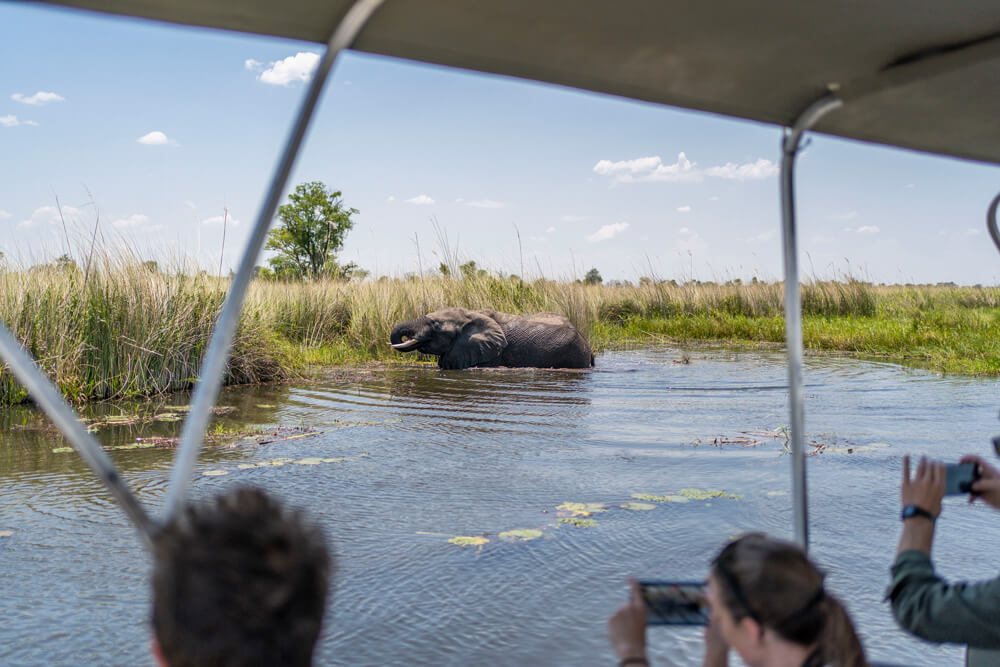
9. Game Drive in Chobe National Park
One of Botswana’s top attractions is, of course, the famous Chobe National Park, which is Botswana’s first national park and is located in the northeast of the country. The park covers an area of 10,566 km² and awaited us with a wide variety of vegetation and an enormous diversity of animals. The reserve is home to huge herds of elephants; depending on the season, the population is estimated at up to 120,000 animals. Besides elephants, you can also discover hippos, giraffes, crocodiles, lions, jackals, leopards, hyenas, wild dogs, buffalo, antelopes, kudus, and wildebeest in Chobe National Park, as well as over 440 species of birds. We also saw countless baby animals, as the offspring are slowly getting on their feet with the onset of the rainy season. This attracts many predators, which you might see with a little luck.

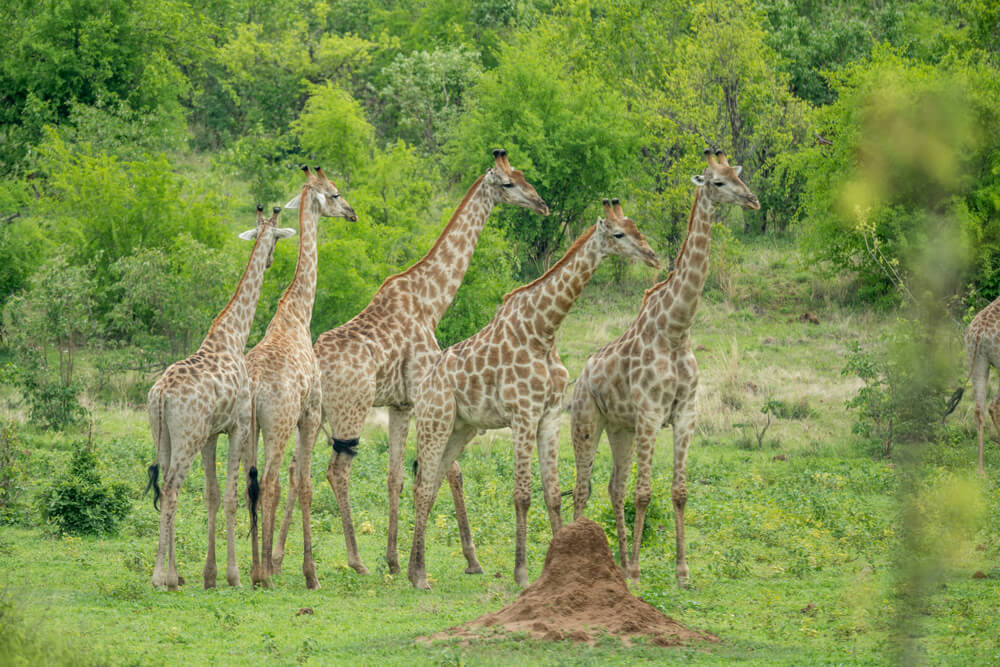
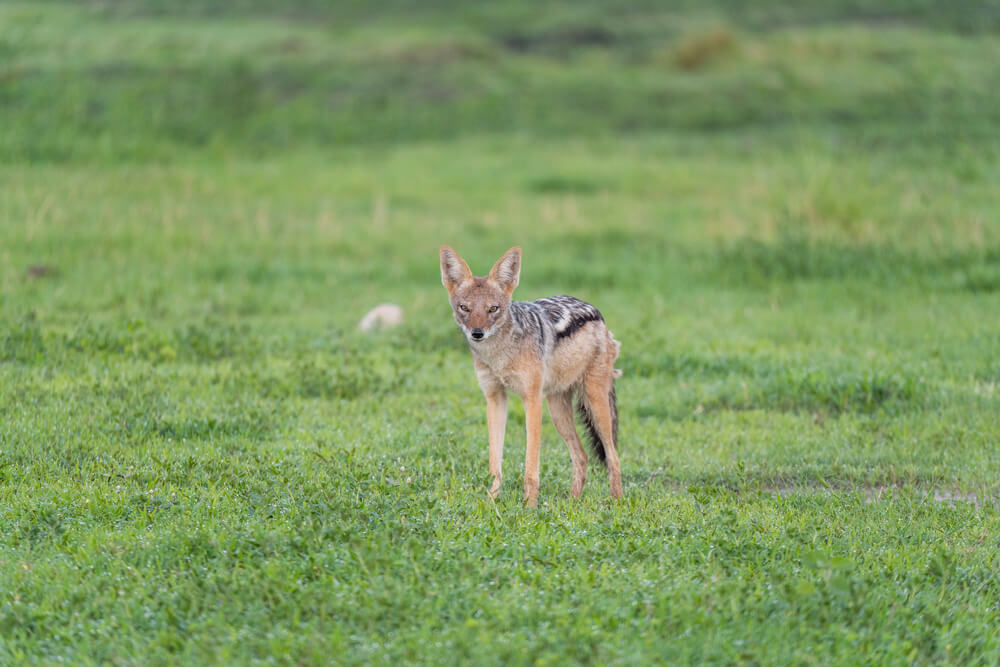
Along the Chobe River Front
We spent 4 days on the Chobe River Front (Ihaha Campsite), which stretches from Kasane to Ngoma Gate (approx. 50 km). We didn’t visit the equally popular regions of Linyanti (northwest) and Savuti (south) during this trip because, after some rainfall and various stories from other guests, we didn’t feel confident driving there. However, we definitely want to explore these regions on our next trip.
The good thing about the rainy season is that everything shines in the most beautiful shades of green, and the vegetation is generally very lush. This is of course a feast for the eyes, even if it makes tracking down the animals much more difficult. Only rarely have we seen larger animals, lionen and hyenas, for example, are only heard at night. In the dry season, however, you can marvel at large herds, especially at the river or at the waterholes.
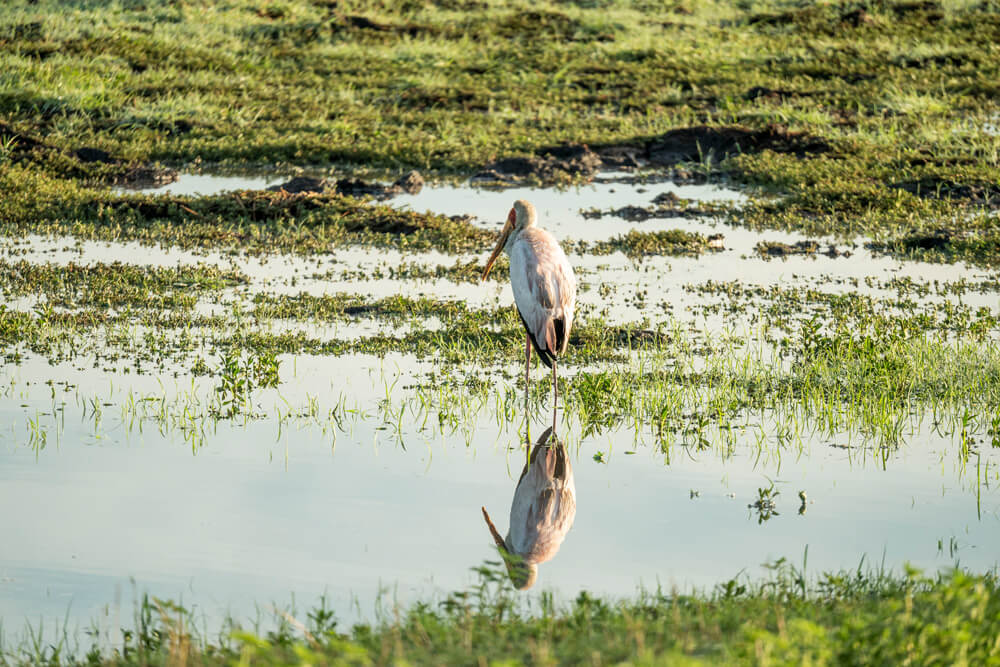
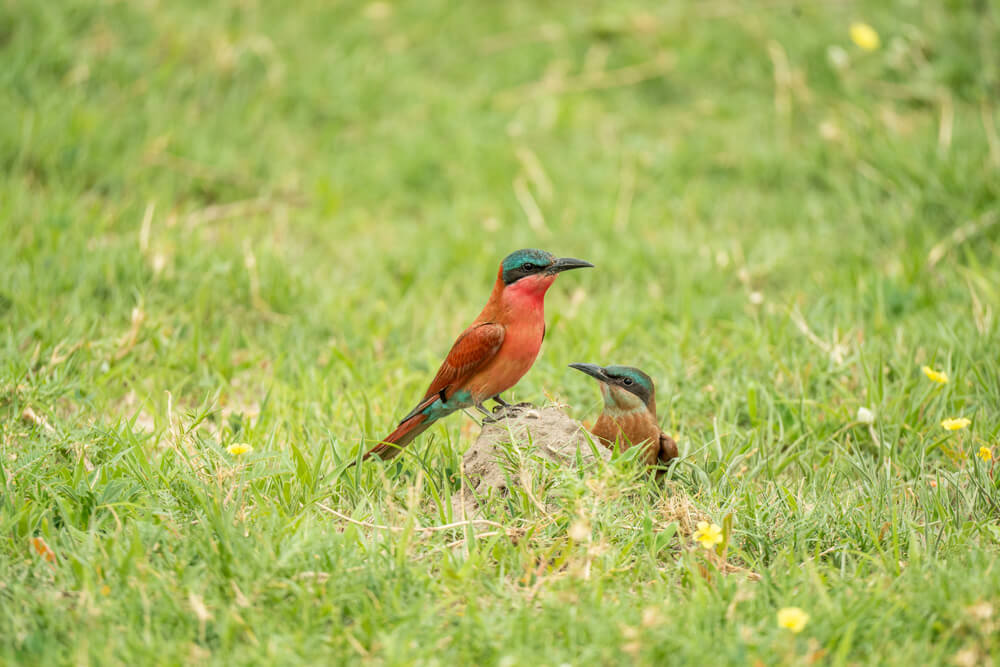
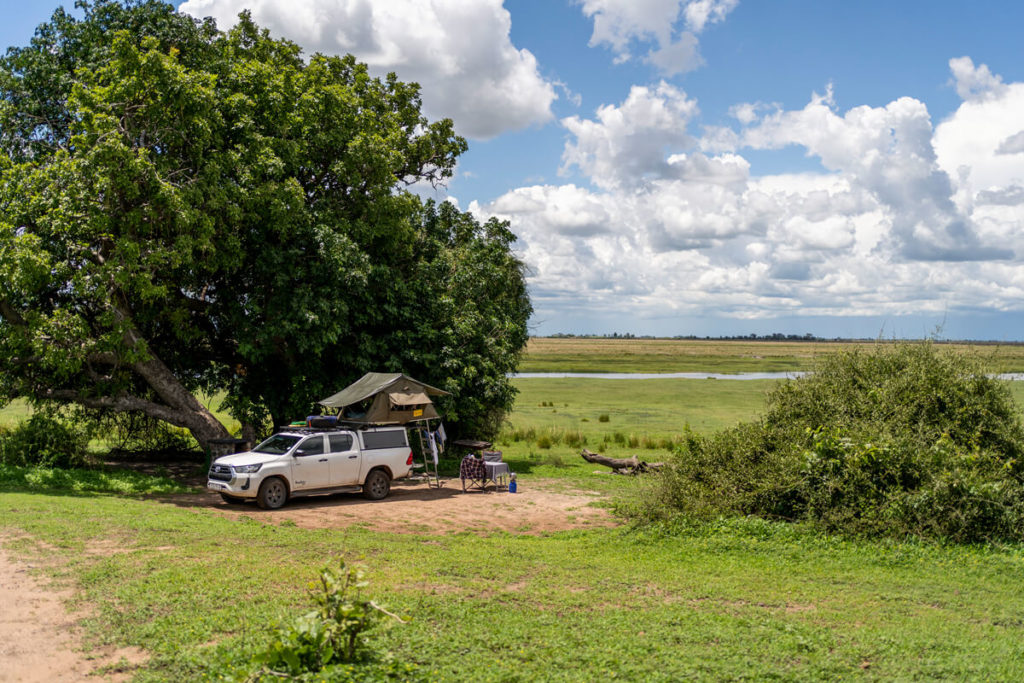
A guide in the park told us that the animals are plentiful even during the rainy season, just much more spread out. We only occasionally saw an elephant, a few giraffes, or buffalo. We didn’t see any lions in Chobe Park, nor any hyenas, leopards, or wild dogs. However, a roaring lion walked past our tent at night, which was truly exciting. We also often heard hyenas at night.
Nevertheless, we found our time in Chobe National Park unique and don’t regret traveling during the rainy season. We’ve never seen as many beautiful birds as we did in Botswana and Namibia. While we didn’t see large flocks or groups, we did see a wide variety of animals. In the park brochures, you can check off all the animals you’ve spotted, giving you a good overview of the animals you’ve already seen.
Getting to Chobe National Park
About Kasane: Kasane is an excellent starting point and tourist hub for tours of the park and the Victoria Falls in the Zambezi (approx. 2-hour drive). The Sedudu Gate is located just 6 km from the city center. There, you pay your entrance fee, sign a booklet, and can begin exploring. If you have booked accommodation in the park, you must show your reservation at the gate.
About Namibia: If you are coming from Namibia or the Moremi Game Reserve (Savuti), it is best to use the Ngoma Gate. We drove into the park from the Caprivi Strip through the Ngoma Gate. You can even fill up the tank about 7 km beyond the gate. If you enter Namibia from Chobe Park through the Ngoma Gate, you will have to pay a fee of 333 ND (a type of “road tax”).
About Moremi: The Mababe Gate is located in the very south of the park and is about 56 kilometers south of Savuti. If you want to drive from the Moremi Reserve into the Chobe and into Savuti, you have to drive through the Mababe Gate in the very south. Check the road conditions in advance and ask for detailed information about which roads you should avoid.
Popular Tours from Kasane:
- Victoria Falls Day Tour from Kasane*
- Chobe National Park: Day Tour with River Boat Cruise*
- Chobe National Park: 3-Hour Game Drive from Kasane*
- From Kasane: Sunset Boat Cruise on the Cuando River*
- Game Drive, Boat Cruise, and Lunch in Chobe National Park*
- From Kasane: Chobe National Park Overnight Camping Safari*
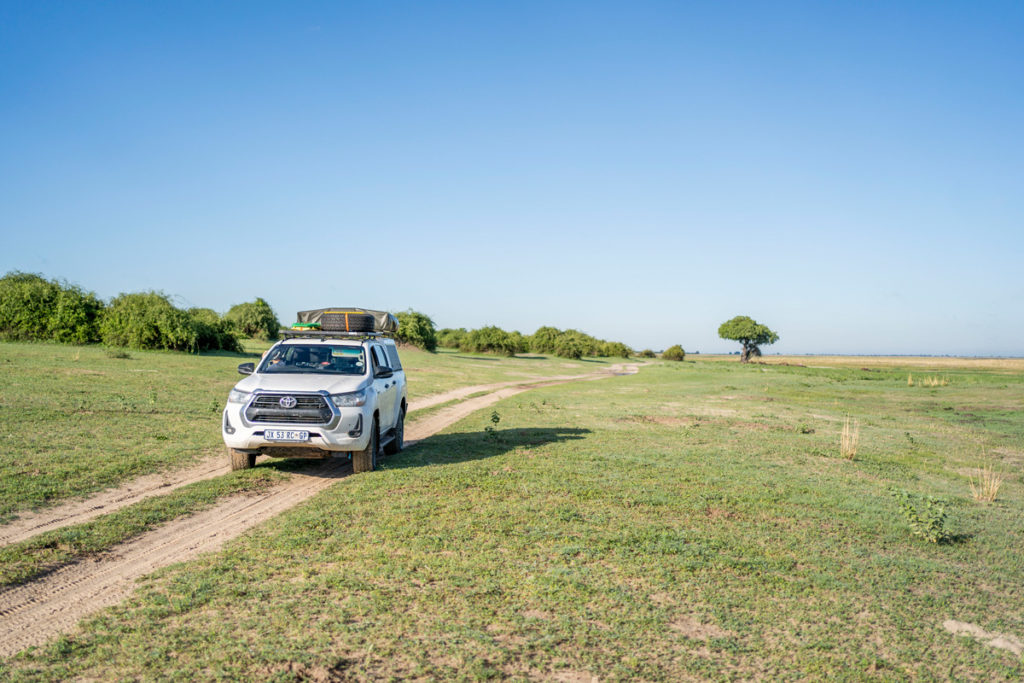
10. Elephant Sands Lodge
After more than two and a half fantastic weeks in Botswana, our final highlight was on the agenda. From Kasane, we drove almost three hours along the very well-developed A33 to the Elephant Sand Lodge. We hadn’t reserved a spot in advance (the staff rarely respond via email) and simply wanted to try our luck on site.
We were there at the end of November and luckily got a spot spontaneously (160 Pula per person). Besides us, there were only two other off-road vehicles with roof tents on the campsite in front of the large waterhole. And there was very little going on in the lodges at that time; we could only see a handful of guests.
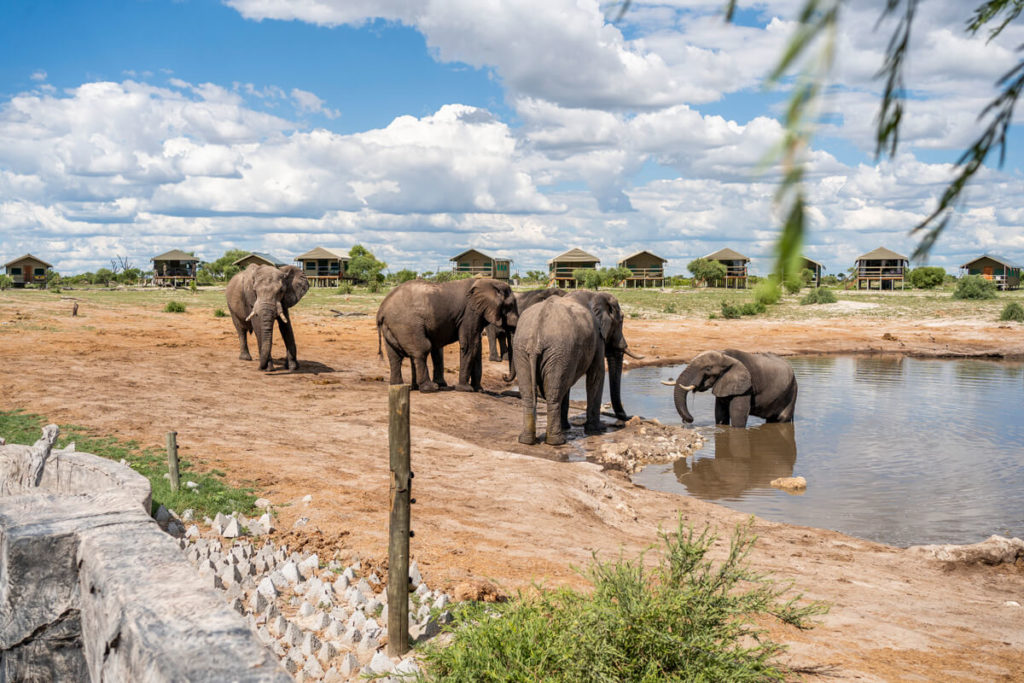
The Elephant Sands Lodge is very popular because a large waterhole forms the center of the complex. Elephants come from all directions, take a break at the waterhole, and then move on. We had no expectations of this place, but were naturally all the more pleased that we were able to observe over 100 elephants that day.
Sometimes they suddenly appeared next to our car, sometimes alone, sometimes in a larger group. We had a great front-row seat and were able to watch the spectacle comfortably from our camping chairs until late into the evening. Definitely one of the top highlights of our Botswana tour!
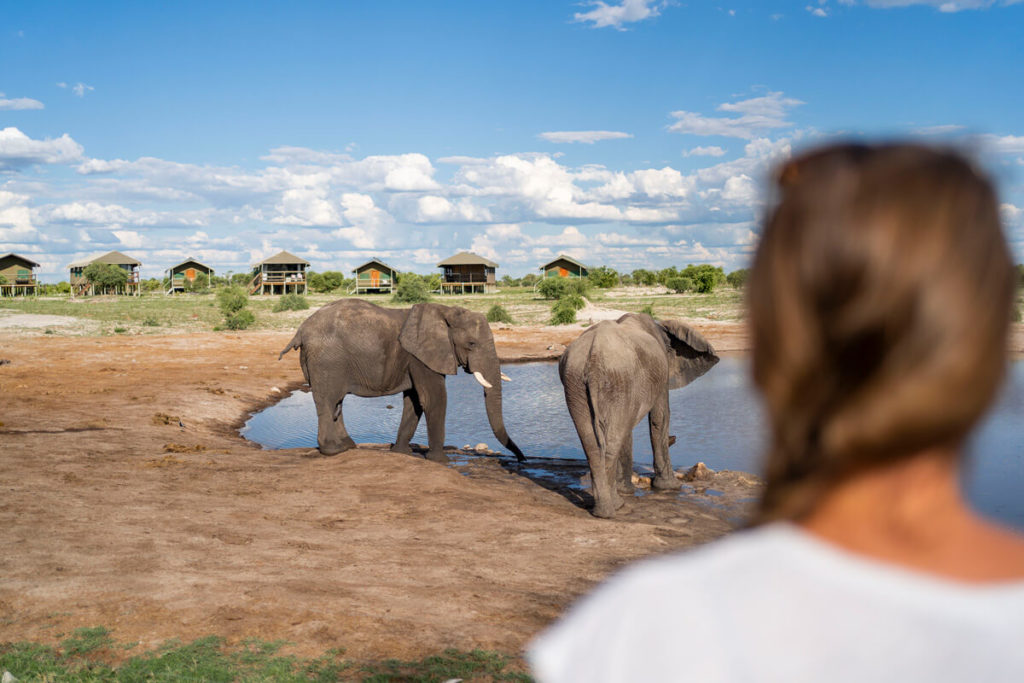
11. Kgalagadi Transfrontier Park
Although we weren’t in the Kgalagadi Transfrontier Park during our last trip, we were there during our trip through the Northern Cape in South Africa. The park is a cross-border protected area in the Kalahari Desert, created by the merger of the Kalahari Gemsbok National Park in South Africa and the Gemsbok National Park in Botswana.
The park is still very pristine, without the frills of other parks. There are a few toilet cabins, a few benches for picnics, and a few camps for overnight stays. There aren’t many fenced areas in the park, which makes the whole experience a bit more exciting. It’s practically “use the toilet at your own risk.”
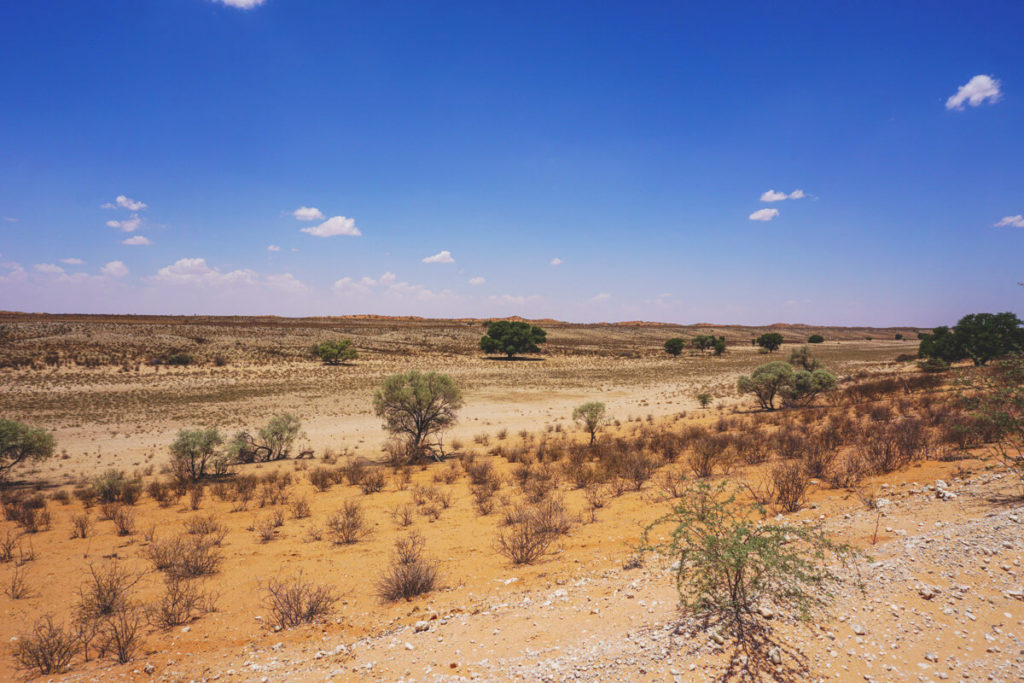
The vegetation ranges from red sand dunes with small bushes to dry savannah with dried-up riverbeds and the occasional tree. The entire park is almost twice the size of Kruger National Park, so you have to be prepared for really long distances, for example, if you want to drive from one gate to another.
The wildlife in this park is amazing; we saw lions and giraffes, among others. Jackals, wildebeests, ostriches, vultures, a leopard, foxes, hyenas, ground squirrels, bustards, large and small birds, and plenty of oryx antelopes. More about this here: All about the Kgalagadi Transfrontier National Park.
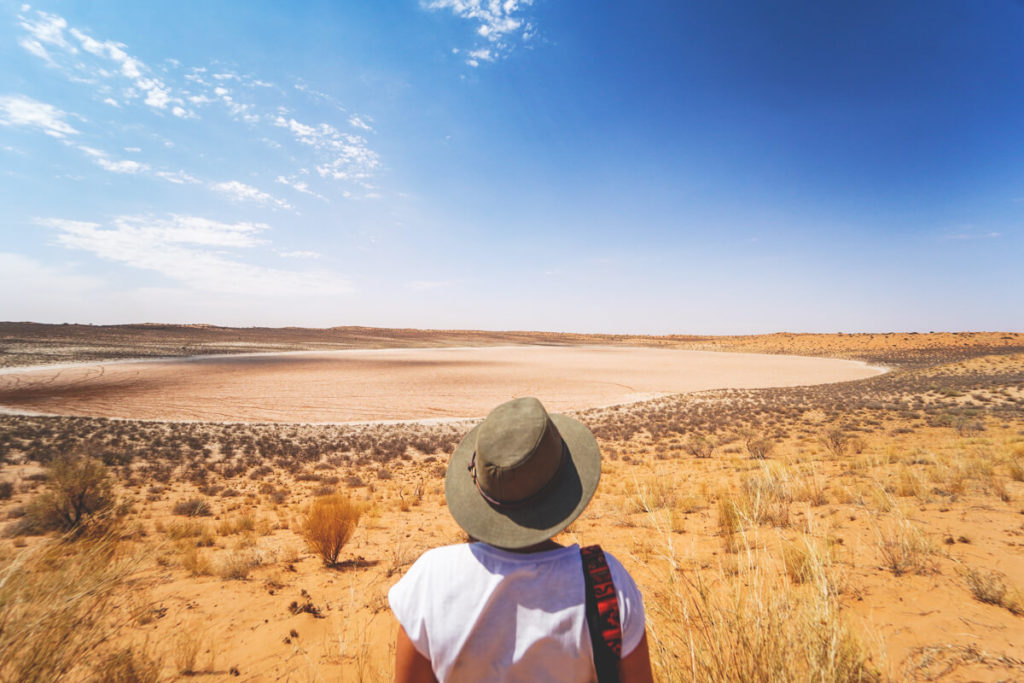
During the rainy season in Botswana
We were at the beginning of the rainy season in Botswana for 3 weeks (November 11th to December 2nd, 2025) and had an incredibly great time in this country. Only on two days did we experience a few hours of rain, but that didn’t bother us too much. During the day, temperatures mostly ranged between 33 and 39°C. We particularly enjoyed the lush green vegetation, the many baby animals, the fascinating birdlife, and, of course, all our encounters with other wild animals.
We also greatly enjoyed the fact that there was not much going on anywhere. Sometimes we were the only visitors for miles around and often had the campsites almost to ourselves. Nevertheless, we would like to travel to Botswana again during the dry season (probably in summer 2024) to see the large herds of animals. In the following overview, we’ve summarized the advantages and disadvantages of the rainy season for you.
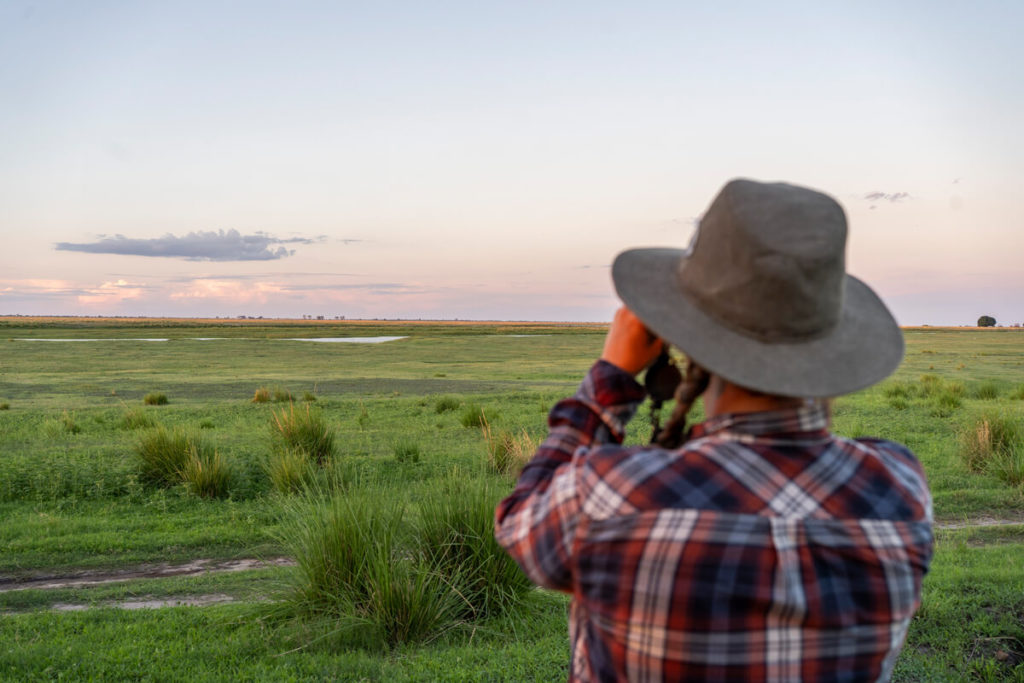
Botswana Sights – Our Conclusion
Well, where should we even begin? Whenever we talk about Botswana, our eyes light up. It was by far one of the most beautiful trips we’ve ever taken. But that’s also because we enjoy being out in nature anyway and love African wildlife. It was a fantastic feeling to often be in the midst of the wilderness and surrounded by wild animals.
We’ll never forget the many beautiful sunsets, nor the wonderful evenings around the campfire with a glass of Amarula. We’re already looking forward to our next trip and can only say: DO IT! Botswana is an absolute dream for all Africa fans and adventurers!